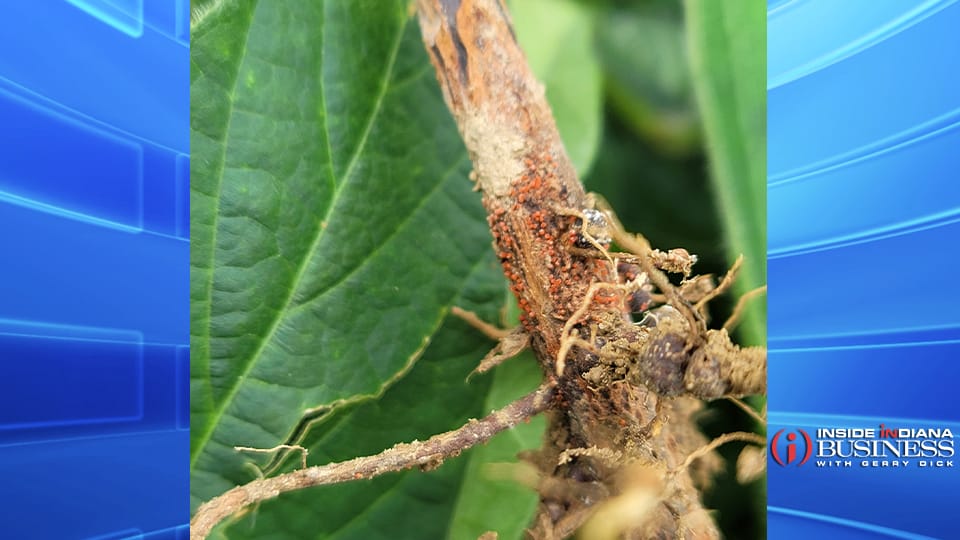Purdue researchers warn of new disease affecting Indiana soybeans
Subscriber Benefit
As a subscriber you can listen to articles at work, in the car, or while you work out. Subscribe Now
DECATUR COUNTY, Ind. - One of Indiana’s largest agricultural products is under threat from a new disease.
Researchers at Purdue University are spreading the word about the danger of red crown rot—a fungal disease that particularly affects soybeans and other legumes.
Red crown rot has been around in the U.S. for decades, but it’s mainly found in the southern part of the country and has posed dangers to peanut crops. The disease was first detected in Indiana two years ago, but now biologists like Purdue University Professor of Biology and Plant Pathology Darcy Telenko are sounding the alarm that red crown rot has been found in at least six Indiana counties.
According to the U.S. Department of Agriculture, Indiana farmers generated over $4 billion in revenue from planting soybeans in 2023.
“It’s a new disease in soybean that we’re not used to seeing here in the Midwest, which is the biggest concern. It mimics other diseases that we try to manage,” Telenko told Inside INdiana Business.
Red crown rot is a fungus that attacks the crown of the soybean causing necrosis. The crown, or the part of the stem near the soil line, will often turn red and some fungus may appear there too. Red crown rot often latches on to plants when they’re seedlings and prevents their root systems from nourishing the plant. The disease can cause up to a 50% yield loss in affected samples.
The biggest issue in Telenko’s mind is that red crown rot looks very similar to other diseases like sudden death syndrome and brown stem rot. That means farmers can misidentify what disease they’re dealing with and not find the right fix.
“The biggest issue for our growers is they need to understand which disease is out in their field in order to implement an optimum management program in the future,” said Telenko.
Based on soybean samples submitted to Purdue’s Plant and Pest Diagnostic Laboratory, researchers have confirmed the presence of red crown rot in six Indiana counties—Adams, Bartholomew, Rush, Decatur, Spencer and Allen. Telenko said her lab also suspects the disease has made its way to DeKalb County, but researchers need to do more testing to confirm.
The good news for farmers is that red crown rot is soilborne and that means it moves slowly. The bad news is that it’s too late this year for farmers to prevent the disease from catching on.
Telenko said rotating corn into infected fields is a good quick way to prevent infection since corn isn’t susceptible. In the long term, growers will need to find new lines of soybeans that are more resistant to red crown rot and new seed treatments, though Telenko said farmers and researchers will have to figure out which seed treatments will be most effective against the new fungus.
Why red crown is popping up in Indiana now is a tough question for Telenko to answer. She said increasingly warm temperatures could make the soil further north more fertile for the disease. Given that red crown rot is being found in new fields, she suspects environmental conditions are to blame rather than large-scale instances of farmers inadvertently bringing in infected soil.
“Was the pathogen present in the soil and found a niche and got into the crops? Or have we brought it in in low levels and we didn’t notice it and now it’s building up because it has the right environmental conditions?” Telenko said.
To help track red crown rot, Purdue Extension asks farmers to send in samples if they believe the disease is affecting their soybeans. Getting the sample tested is free and growers can find more information here.
